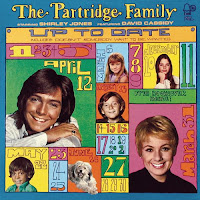Ugg boots
An icon of Anglophone culture
Story behind the ugg boots
Most of you probably know the Ugg
boots, created by the UGG Australia brand. But are you aware of the long
history behind these popular boots?
There is a theory that says that these unisex,
sheepskin boots were already worn by Australian shepherds in the 1800s, but in
a different way: they took the sheepskin and wound it around their feet and ankles.
Later, in the 1960’s, the ugg boots were worn by surfers to keep their feet
warm after they got out of the sea. They were introduced in California for the
first time in 1978, by the Australian surfer Brian Smith. He was the one
who founded the UGG Australia company. In 1995, Smith sold the company to Deckers Outdoor
Corporation, which already sold Teva sandals. They later expanded to New York
City.
Success and international spreading of UGG Australia
The UGG boots became a huge
success and, therefore, Deckers Outdoor Corporation opened several new stores
in Japan, China, London and Paris. A lot of American actresses wore these shoes
on set or just because they were so comfortable.
 |
One other reason for the large success of UGG is their collaborations with designer brands. They launched a collection with Jimmy Choo, an iconic luxury brand. And later they collaborated with Swarovski. They constantly adapt and renew themselves to the needs of their customers. For example, they created a collection for men and change the colours and the design of the boots according to the seasons.
| UGG boots from the Swarovski collaboration |
 |
| Jimmy Choo collection |
 |
| Classic boots of the brand UGG Australia |
Imitations and competition for the monopoly
A lot of websites, such as eBay,
sell fake Ugg boots. Deckers' brand-protection unit has already blocked lots of
them. 60 000 pairs of those imitation boots were confiscated by customs agents.
UGG Australia is the best-known brand of sheepskin boots but there are others, such
as EMU. These brands are legitimate companies and their names also sound very
Australian. They
weaken the profits and success of UGG Australia.
 |
| Left: UGG Australia boots Right: imitations of the brand |
 |
Animal welfare and ethical values
As
they indicate it on their official website, UGG Australia only uses sheepskin
from sheep that were raised to produce food. They prefer to collaborate with
farmers whose aim is to sell their livestock’s meat, which represents 90% of these
farmers’ business. The 10 remaining percents represent the sheepskin that can
be sold to companies such as UGG. This is not the only criterion that is
required by the brand when it comes to buying raw material. They only work with
suppliers who stand for the same ethical values and sourcing. They want to
protect the animals from any possible violence and abuse. Because of that they
are not afraid to say that the company never used sheepskin from sheep that
have suffered from mulesing. This is a procedure intended to
remove folds of skin from the sheeps’ tails to reduce fly strike.
In regards to the traceability,
they find their sheepskin in tanneries after having checked its country of
origin. In fact, they only accept products from countries which apply regulated
standards concerning the treatment of animals: Australia, the USA, Ireland, the
UK and Spain. UGG has recently banned using angora. They do not agree with the way
the angora
rabbits were treated. These animals are known for their
long, soft fur. They hand-pluck the fur at the time the animals moult while they
are still alive. This painful process takes place every four months for up to
five years.
Ugg Boots are probably one of the
most popular, well-known boots in not only Australia but also in America, the
United Kingdom and the whole rest of Europe. The street scene without these
fluffy boots seems unthinkable. This product, originally from Australia is
therefore a perfect symbol of the Anglo-Saxon culture.
Astrid Cleeren, Claire Collignon and Daphné Dessilly
Sources:
- http://www.bbc.com/news/world-australia-41464142
- https://www.ugg.com/uk/world-of-ugg-story.html
- http://fashion.telegraph.co.uk/news-features/TMG8283572/The-story-of-Ugg.html
- http://www.dailymail.co.uk/news/article-2510641/Cruel-truths-angora-fur-trade-revealed-shocking-video.html
- http://www.ourendangeredworld.com/truth-behind-angora-faux-fur-production/
- https://www.google.be/imghp?hl=fr&tab=wi
- https://en.oxforddictionaries.com/definition/mulesing






















